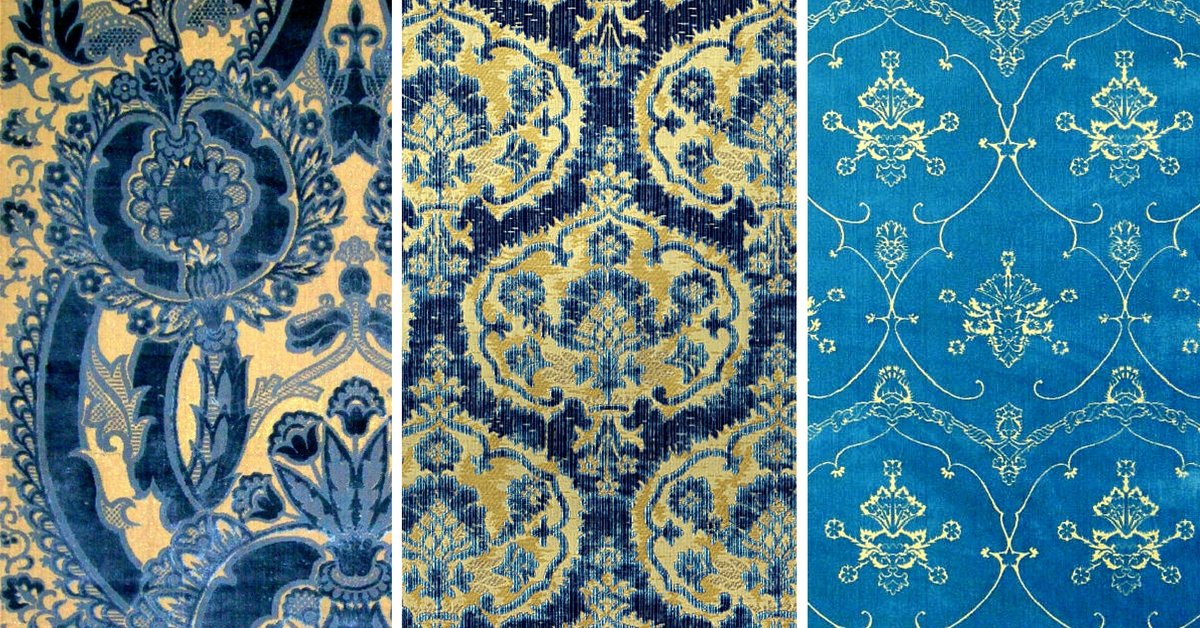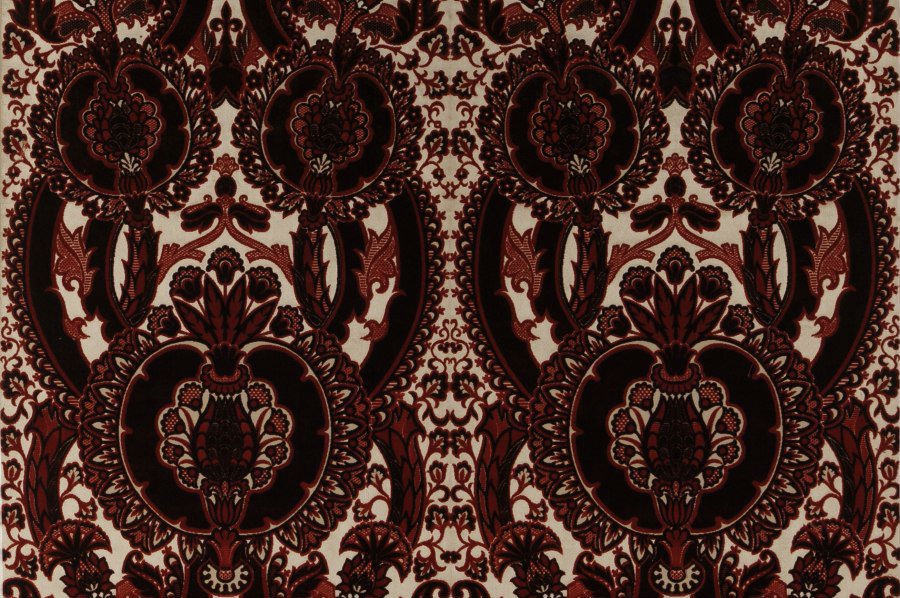Bevilacqua’s fabrics show uncounted decorative patterns, with an Art-Nouveau, deco or baroque style, as well as older ones, as for example the rampant-lions motif, coming from no less than Sasanian art – from the name of the last dynasty that ruled over Persia before the Islamic conquest (640 AD circa) – and which was used on samites, too, the first fabrics produced in Venice.
As well as samites, from the East Venice imported the motifs of this fabric which were, though, limited to symbolic animals. But samite is now an almost unknown fabric: why? Because velvet was by far a bigger success. And Venice has the weavers from Lucca to thank for bringing this fabric here, when they fled from their city at the beginning of the 14th century, due to political reasons.
New fabric means new patterns: and so the designs of Venetian fabrics widened their horizons. Here’s some of them.

The decorative patterns of the oldest Venetian fabrics
Soprarizzo, allucciolato, cesellato, laminato, brocaded, voided, garden, pile-on-pile, cut and two-pile velvet: these are the various kinds of a fabric that kept on being loved till the end of the 17th century. But in the meanwhile, Venice’s weaving mills had started producing other luxury fabrics, too, so the following patterns do not characterize only velvets:
- heraldic motifs: all of the natural, artificial and chimeric figures that one can see on a coat of arms, that is: living beings, stars and natural elements; objects created by mankind; imaginary creatures;
- a cammino motifs: born in the 15th century, they’re characterized by large lobed leaves, set horizontally and with a pomegranate in the middle;
- a griccia motifs: other patterns dating back to the 15th century, where plants – as for example thistle and lotus flowers, pomegranates, pine cones and trunks – alternate, following a wavy vertical line;
- a zecchini motifs: zecchino was the name given to Venice’s golden ducat, around the middle of the 16th century, but which spread to other golden coins all over Italy, showing different images according to the city it was minted in;
- bizarre motifs: from the chinoiserie which were all the rage in the 18th century and which echoed Chinese pieces of porcelain, to this pattern made up of fantastic figures and inexplicable weaves.


